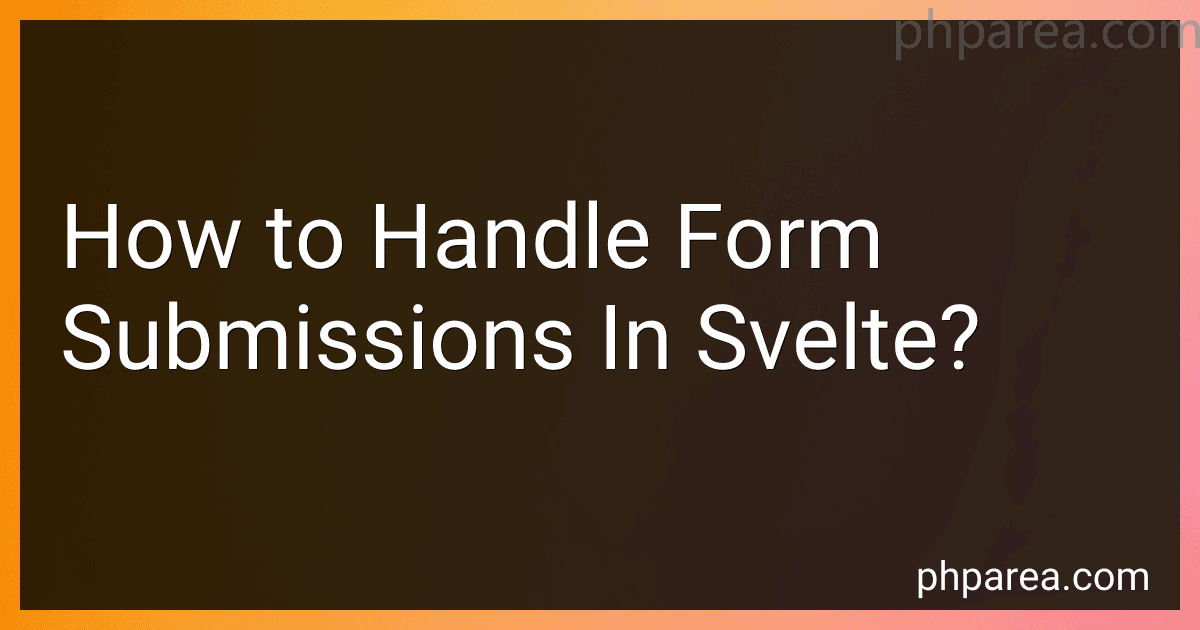Best Svelte Form Management Tools to Buy in December 2025
Handling form submissions in Svelte involves creating a form component that captures user input and sends it to a server or performs some other action. You can use the submit event of the form element to trigger a function in your Svelte component, where you can access the form data and process it as needed. To prevent the default form submission behavior, you can call event.preventDefault() at the beginning of your submit handler function. You can then access the form input values using the event.target object and send them to a server using fetch or another HTTP client. Finally, you can update the UI based on the response from the server or perform any other necessary actions.
What is the role of the this context in handling form submissions in Svelte?
In Svelte, the this context is not used to handle form submissions. Instead, form submissions are typically handled by attaching an on:submit event handler to the <form> element in the Svelte component. The event handler function is defined in the <script> section of the component and can access the form data using a reference to the form element. The event object passed to the event handler function also contains information about the form submission, such as the form data and the submit event itself.
How to handle form validation in Svelte?
In Svelte, you can handle form validation by utilizing the built-in validation methods and creating custom validation logic. Here are the steps to handle form validation in Svelte:
- Create a Svelte component for your form:
Password
Submit
- Add validation logic to your form fields:
- Display error messages in your form:
Email {#if errors.email}{errors.email}{/if}
Password {#if errors.password}{errors.password}{/if}
Submit
By following these steps, you can implement form validation in a Svelte component. Customize the validation logic according to your requirements and display error messages to the user when there are validation errors.
How to handle file uploads in form submissions in Svelte?
In Svelte, you can handle file uploads in form submissions by using the FormData object in JavaScript. Here's a step-by-step guide on how to do this:
- Create a form in your Svelte component with an input element of type "file" for the file upload:
- Create the handleSubmit function in your Svelte component to handle the form submission:
import { onMount } from 'svelte';
onMount(() => { const formData = new FormData(); formData.append('file', files[0]); fetch('http://example.com/upload', { method: 'POST', body: formData }).then(response => { // handle response }).catch(error => { // handle error }); });
- In the handleSubmit function, create a new FormData object and append the file from the input element to it. Then use the fetch API to make a POST request to the server with the FormData object as the request body.
- In the server-side code that handles the file upload, make sure to handle the file upload and response appropriately.
That's it! You have now successfully handled file uploads in form submissions in Svelte.
